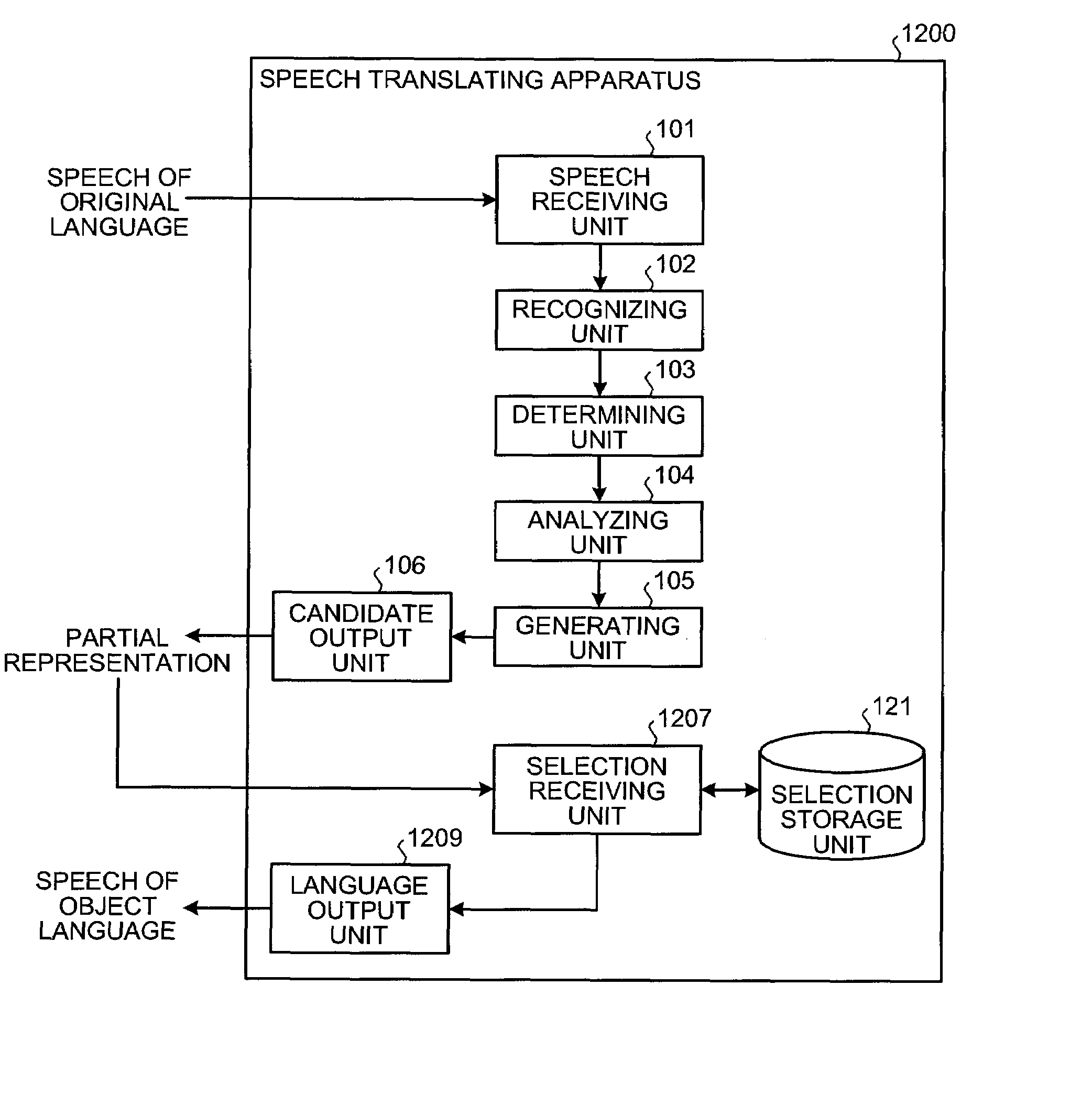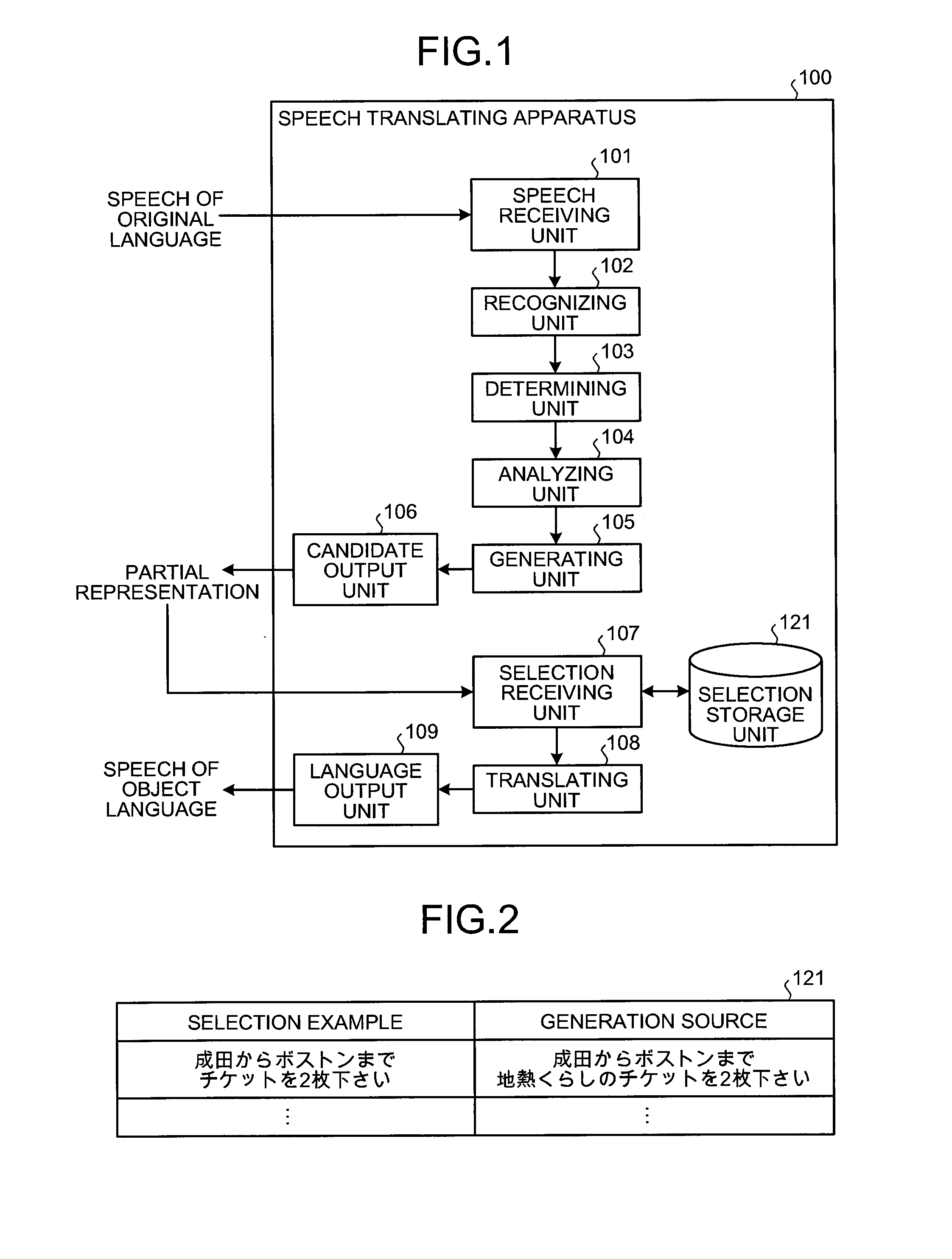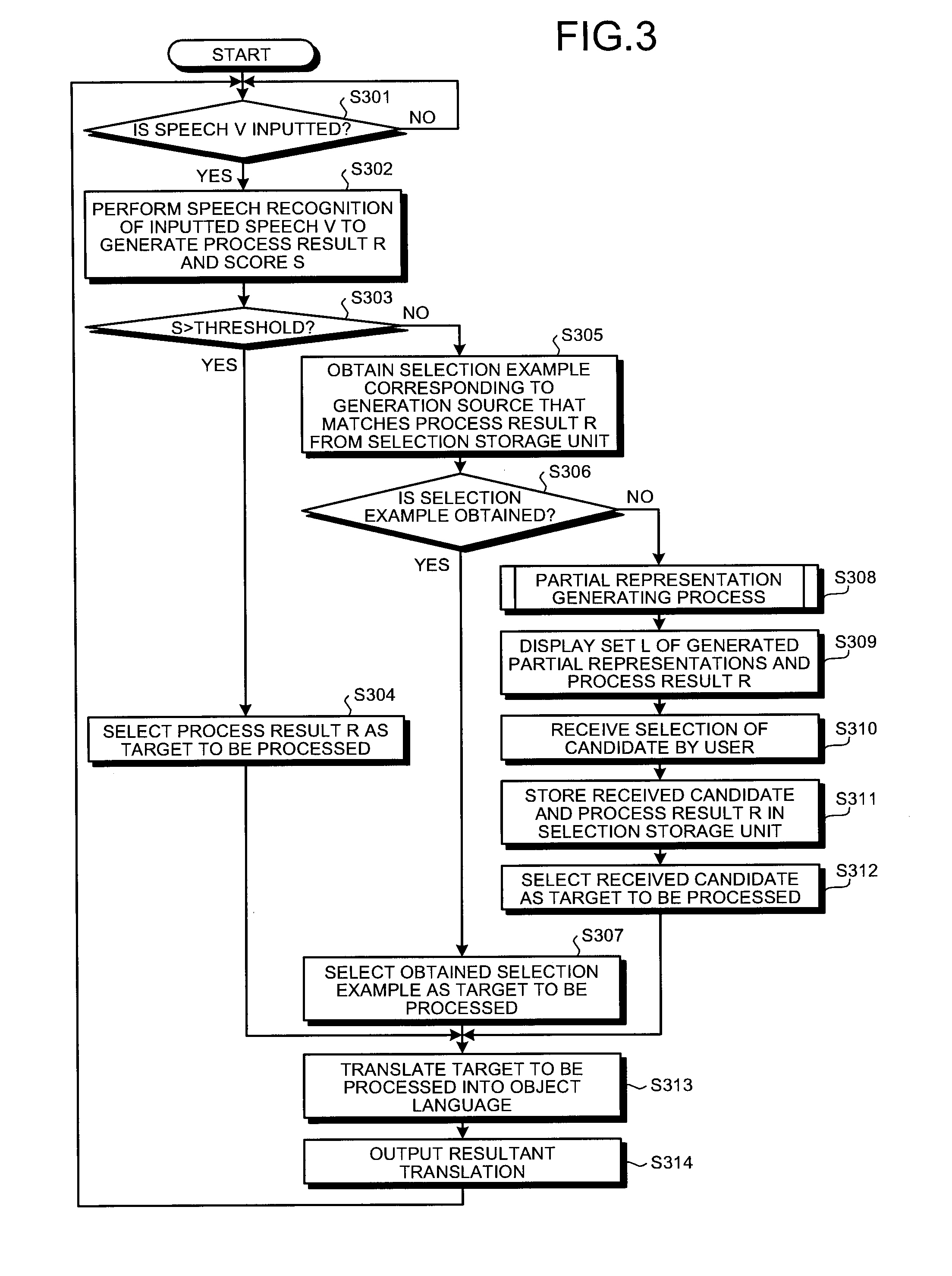Apparatus, method, and computer program product for processing input speech
a computer program and input speech technology, applied in the field of input speech processing apparatus, method and computer program product, can solve the problems of inability to recognize 100 percent without error, inability to properly segment speech into sections, and inability to properly segment speech
- Summary
- Abstract
- Description
- Claims
- Application Information
AI Technical Summary
Problems solved by technology
Method used
Image
Examples
first embodiment
[0036]A speech processing apparatus according to the present invention generates plural partial character strings (hereinafter, “partial representations”), each of which is obtained by removing a partial character string from a speech recognition result, presents to the user the generated partial representations, receives a partial representation that is selected from the presented partial representations by the user as a target for speech processing, and performs the speech processing.
[0037]Explanations are given below of an exemplary case that the speech processing apparatus according to the first embodiment is implemented as a speech translating apparatus that translates speech input by the user in a source language into a target language semantically equivalent, and outputs the translated speech, thereby supporting cross-language communication. In this example, Japanese and English are used for the source language and the target language, respectively, while the source language ...
second embodiment
[0113]A speech translating process performed by the speech translating apparatus 1200 is explained with reference to FIG. 13.
[0114]The speech receiving unit 101 determines whether speech V is inputted (step S1301). When the speech V is not inputted (NO at step S1301), the process is repeated until the speech V is inputted.
[0115]When the speech V is inputted (YES at step S1301), the recognizing unit 103 performs speech recognition of the inputted speech V, to generate a recognition result (hereinafter, J) and a recognizing score S (step S1302).
[0116]The translating unit 1208 translates the recognition result J into a target language, to generate a process result R as a translation result (step S1303).
[0117]The score comparing process, the selection example obtaining process, the partial representation generating process, and the candidate receiving process from steps S1304 to S1313 are the same processes as those at steps S303 to S312 performed by the speech translating apparatus 10...
PUM
 Login to View More
Login to View More Abstract
Description
Claims
Application Information
 Login to View More
Login to View More - R&D
- Intellectual Property
- Life Sciences
- Materials
- Tech Scout
- Unparalleled Data Quality
- Higher Quality Content
- 60% Fewer Hallucinations
Browse by: Latest US Patents, China's latest patents, Technical Efficacy Thesaurus, Application Domain, Technology Topic, Popular Technical Reports.
© 2025 PatSnap. All rights reserved.Legal|Privacy policy|Modern Slavery Act Transparency Statement|Sitemap|About US| Contact US: help@patsnap.com



